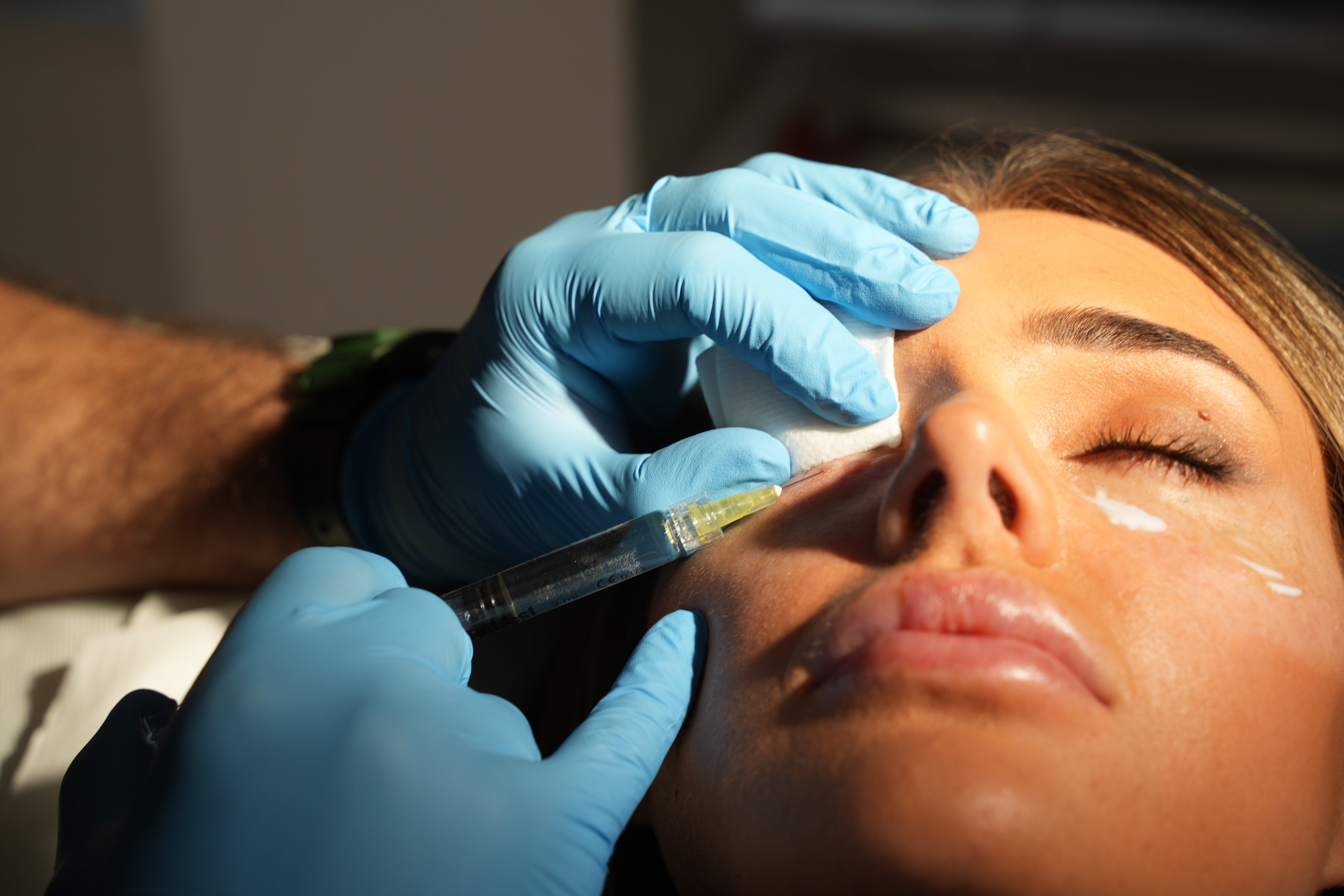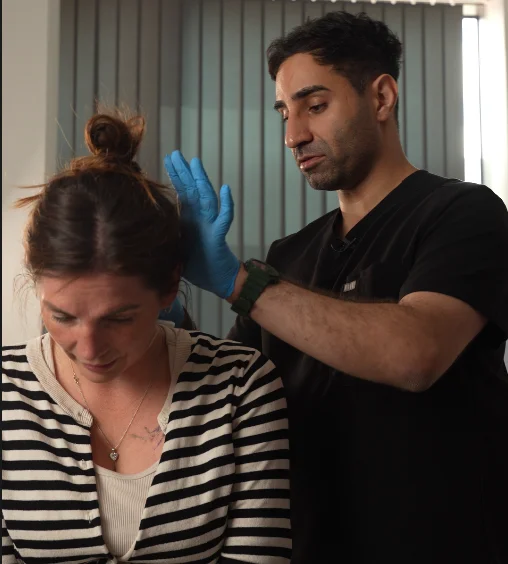PRP Hair Treatment in Leeds: What Works, What Doesn’t (Evidence, Microneedling & Real Results)
Hair loss is one of the most common concerns we see in clinic, and it affects both men and women. From female pattern thinning to male pattern baldness, the impact on confidence can be huge. The good news? Regenerative medicine is reshaping how we treat hair loss.
PRP hair treatment
(platelet rich plasma therapy) is at the centre of this shift. PRP is different from lotions or supplements that make big promises.It uses your own blood, which is turned into plasma full of growth factors. This helps to promote natural hair growth.
In Leeds, Skinfinity provides PRP in a CQC-registered clinic within a private hospital. The treatment is done by Dr. Mahmoon Rashid, ensuring safety, accuracy, and results that feel genuine.
What is PRP, and what does it actually do?
A small blood sample is taken and spun in a centrifuge. They separate the golden plasma layer, rich in growth factors, and inject it back into targeted scalp areas. This helps:
- Strengthen existing hair and increase hair density
- Support hair follicles back into active growth
- Improve scalp quality over time
Because the plasma comes from your own blood cells, the effects of PRP arrive with a low risk profile.
Does it work? Evidence in plain English
- Pattern hair loss affects both men and women. Most studies show that hair density improves in 3 to 6 months. This is especially true when you use topical or oral treatments prescribed by your doctor.
- Alopecia areata: PRP may help some cases, and we must tailor expectations.
- Telogen effluvium: Stabilise the trigger first; PRP is not first-line
We document progress with standardised photograph, so you can see objective change, not just nice lighting.
What the evidence suggests
Recent reviews and clinic studies point to PRP improving hair density in androgenetic hair loss, with best results when combined with clinician-directed therapies (e.g., minoxidil). Outcomes vary when protocols differ, which is why we standardise preparation, dosing and follow-up. For alopecia areata, evidence is emerging expectations are tailored. We’ll share the specific studies we use to guide your plan during your consultation.
In clinic, we frequently recommend bio-microneedling with PRP for patients seeking maximum stimulation with natural, undetectable improvement.
Who tends to do best with PRP
- Early–moderate pattern thinning (women and men) where follicles are still present
- Stabilised telogen effluvium (once the trigger is addressed)
- Transplant journey: pre-op scalp optimisation and post-op maintenance
Generally not suitable for:
- Active scalp infection, scarring alopecias, uncontrolled bleeding/platelet disorders, pregnancy (case-by-case medical advice needed)
PRP for hair transplants: prep & maintenance
PRP is a powerful adjunct around surgical restoration:
- Pre-transplant: Optimises scalp condition and strengthens existing hair.
- Post-transplant: May support healing, reduce shedding, and help maintain hair density over time.
Skinfinity Leeds works with Living Care Group for hair loss services. They offer a clear path from medical treatments to surgery and long-term care.
What to expect on treatment day
- Consultation: Pattern analysis, medical history, realistic goal-setting.
- Blood draw & spin: Plasma separated from red/white cells.
- PRP injections: A grid of gentle scalp injections across thinning zones.
- Aftercare: Avoid washing for 24 hours; mild soreness/redness is normal.
Typical plan: 3 sessions (monthly) → review at month 4–6 → maintenance every 3–6 months.
Side effects & downtime
Most effects are mild and short-lived:
- Tenderness, swelling, and redness at injection site
- Temporary tightness or mild headache
Serious complications are rare in a CQC-registered setting with a medical doctor.
Case study: Jake 31 (Leeds)
- Baseline:e Diffuse thinning; crown density ~120 hairs/cm².
- After 3 sessions: ~150 hairs/cm²; reduced shedding; stronger shafts.
- At 6 months (maintenance added): Stable density, visible thickening; confidence restored at work.
Jake now combines clinic PRP with a tailored home regimen and periodic prp therapy maintenance.
Why Skinfinity Leeds
- Doctor-led: Performed by Dr Mahmoon Rashid in a regulated medical environment
- CQC-registered clinic inside a private hospital
- Evidence-based protocols with objective tracking
- Integrated pathway via Living Care Group for comprehensive hair loss care
- Dr Mahmoon Rashid — MBChB (Univ. of Leeds, 2010), GP since 2015, Aesthetic clinician since 2020. Advanced training in regenerative and injectable treatments with a focus on safe, natural-looking outcomes. Treatments are delivered within our CQC-registered clinic inside a private hospital, following medical governance and audit.
Ready to take the next step?
If you want a natural way to treat thinning, we will help you understand what works and what doesn’t. Book a no-pressure consultation and leave with a plan that fits your hair, lifestyle, and goals.
FAQs
Does PRP actually regrow hair?
PRP can help hair grow and make it thicker in many cases of pattern thinning. This works best when started early and with support from a clinician. Results build over several months and require maintenance.
How much does PRP cost UK?
Fees vary by region, clinician and protocol (PRP type, session length, measurement plan). We discuss personalised pricing at consultation to ensure the plan matches your goals.
What is the cost of PRP for hair?
Costs depend on the number of sessions needed and whether you opt for microneedling with PRP or transplant support. We provide transparent package options after your assessment.
How long does PRP last hair?
Improvements typically emerge by 3–6 months and are best maintained with top-ups every 3–6 months, adjusted to your response and goals.

.webp)



